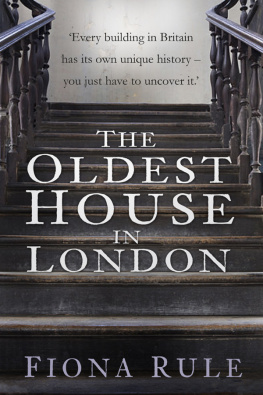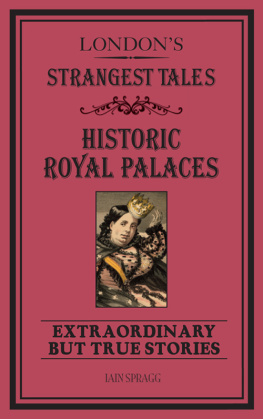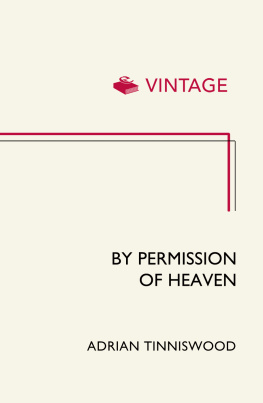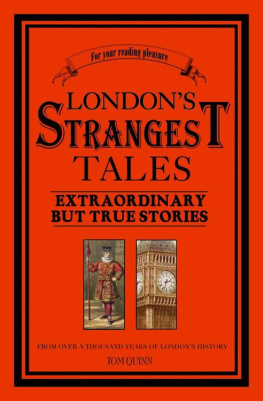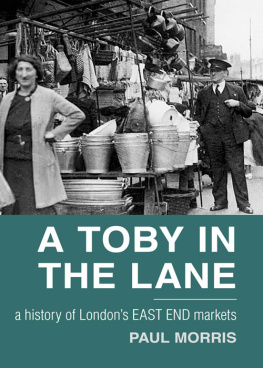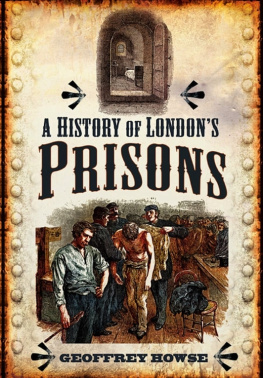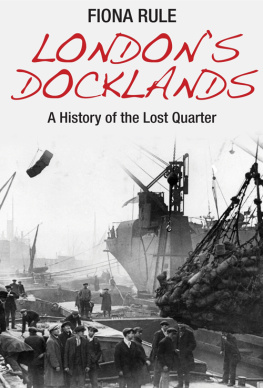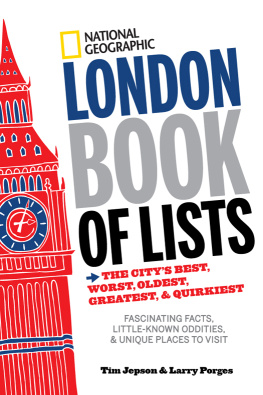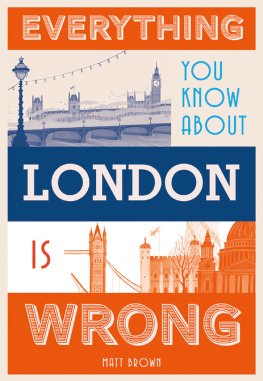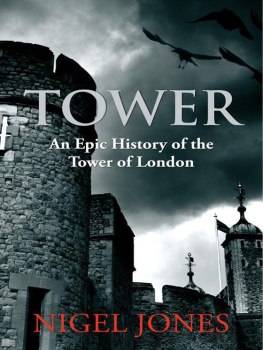

For my sister, Lindsay Rule.
First published 2017
The History Press
The Mill, Brimscombe Port
Stroud, Gloucestershire, GL5 2QG
www.thehistorypress.co.uk
Fiona Rule, 2017
The right of Fiona Rule to be identified as the Author of this work has been asserted in accordance with the Copyright, Designs and Patents Act 1988.
All rights reserved. No part of this book may be reprinted or reproduced or utilised in any form or by any electronic, mechanical or other means, now known or hereafter invented, including photocopying and recording, or in any information storage or retrieval system, without the permission in writing from the Publishers.
British Library Cataloguing in Publication Data.
A catalogue record for this book is available from the British Library.
ISBN 978 0 7509 8647 2
Typesetting and origination by The History Press
Printed and bound in Great Britain by TJ International Ltd
eBook converted by Geethik Technologies
CONTENTS
2 The Eagle & Child:
The Oldest House in London is Built
3 The Proud, Bloody City of London:
Cloth Fair in the Civil War
4 The Sign of the Red Cross:
Death Visits Cloth Fair
5 London Was, But Is No More:
Or How the Oldest House in London Very Nearly Wasnt
6 Knavery in Perfection:
The Riotous Heyday of Bartholomew Fair
7 By Ordinance of God:
The Wesley Brothers at Cloth Fair
8 The Newgate Six:
Cloth Fair and the Gordon Riots
9 Property is Power:
Cloth Fair at the Heart of Radical Politics
10 A Piece of Tyrannical Impertinence:
Cloth Fair and the First Modern Census
11 The Death of Old London:
Part One
12 The Death of Old London:
Part Two
13 Saving London:
Seely, Paget and the Second World War
FOREWORD
Searching for Londons Oldest House
Finding the oldest house in London was not an easy task. Over the centuries the citys buildings have adapted and evolved to meet the demands of an ever-changing metropolis. Consequently, some structures that were originally built as houses are now commercial premises while ancient workshops and warehouses have been converted into sought-after private homes. The inexorable growth of the metropolis over the centuries has also meant that houses that once stood in an Essex, Surrey or Middlesex village now possess a London postcode.
Early on in my research, I developed simple but strict criteria for identifying the oldest house in London: it had to have been built as a private residence within the precincts of the city and it still had to be someones home today. My self-imposed rules eliminated several strong candidates. For example, the elaborate building now known as Prince Henrys Room at 17 Fleet Street and the Staple Inn on High Holborn were built in 1610 and 1585 respectively, but both were originally inns, not private houses. The Old Curiosity Shop on Portsmouth Street WC2 predates both of the above and the upper rooms of this extraordinary sixteenth-century property were undoubtedly domestic for much of its long history. However, today, as its name suggests, the building is a shop, selling an interesting range of rather expensive shoes. Likewise, 74 and 75 Long Lane EC1 were built as houses back in the late 1590s but ceased to be private homes many moons ago. Further out of central London, stranded on the grimy northern approach to the Blackwall Tunnel, Bromley Halls elegant Georgian faade conceals a much earlier house that was built in the 1490s by Holy Trinity Priory. However, its location was not part of London until the late 1800s.
Ultimately there was only building that met my criteria. Built as a domestic residence in 1614, it originally formed part of the City Ward of Farringdon Without. Today it is still used as a private home and its story, along with that of its inhabitants, is told in this book.
Acknowledgements
I would like to thank the staff of Londons archive centres and Matthew Bell, the current owner of Londons oldest house, whose help has been invaluable. I would also like to thank my husband Robert, the rest of my family, and my friends, particularly Sharon Tyler, for their interest and support. As always, the wisdom and guidance of my agent, Sheila Ableman, has been invaluable and I am very grateful to The History Press for their belief in me and my books. Finally, I would like to thank Jean Rule for her enthusiasm and encouragement over the years. Sleep well.
INTRODUCTION
This is the story of a house. Today it is the oldest private home in the City of London, but its outward appearance gives few clues to its fascinating and ancient heritage. In fact, most people are unaware of its existence. It hides in plain sight at 4142 Cloth Fair a narrow street sandwiched between the glass and iron splendour of Smithfield Market and the high walls of Barts Hospital. Cloth Fairs Smithfield entrance yields an unpromising view, but anyone who cares to venture a little further down the street will be rewarded. Victorian brick quickly gives way to ancient stonework as the magnificent Church of St Bartholomew the Great looms into view. Slip through the gate in the railings and you find yourself in a shady churchyard where the bustle and noise of the nearby market dulls to a distant murmur. Here, a straggly collection of trees and shrubs frame a strangely timeless view of 4142 Cloth Fair its fine gabled projections and glinting leadlight windows tantalisingly hinting at a history that stretches back into a time long forgotten.
Over the centuries, 4142 Cloth Fair has weathered many storms as, all around it, history unfolded. Its inhabitants witnessed events that moulded Britain into the country that it is today. They saw plague, fire and war. They struggled through financial crises, religious strife and commercial revolutions. They are our ancestors, and through their own personal stories we can learn how world-famous events affected ordinary people like us. Names of former residents such as Henry Downing, Elizabeth Witham and Paul Paget do not loom large in the history books but they nonetheless have incredible stories to tell: the first was an eyewitness to the English Civil War and the Great Plague of 1665; the second was a key figure in the foundation of the Methodist movement; and the third was responsible for saving some of Londons most iconic buildings after the ravages of the Second World War. It is hoped that their stories, along with many others, will go some way to prove that every property in Britain has its own, unique history you just have to look for it. Even twenty-first-century houses stand on land as old as time itself that holds myriad secrets waiting to be uncovered.
Today, public interest in Britains architectural heritage is at an all-time high but, nevertheless, not a month goes by without a much-loved building being sacrificed in the name of progress. As The Oldest House in London shows, it is not only mansions and palaces that have extraordinary histories. Homes built for ordinary people can be equally fascinating. It is up to us to preserve the buildings we love by exploring their past and, most importantly, divulging their secrets to others.
1
LAND GRAB
On a cool May morning in 1538, as the sun rose over the rooftops of London, Brother John Forest was dragged from his bed, dressed in a coarse woollen shift and thrust down the steps of the Franciscan friary in which he had been under house arrest. A horse stood waiting in the street, a rough wooden hurdle trailing behind its haunches. Forest was thrown to the ground, strapped to this wheel-less carriage and with a sharp crack of a whip, the horse took off through the streets of London.
Next page
